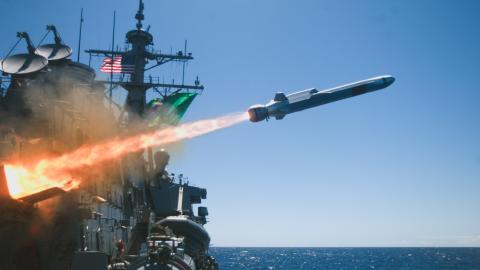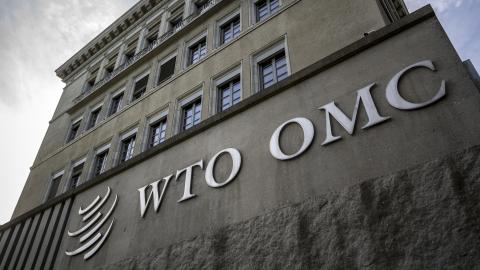It’s time to speak plainly: The World Trade Organization has become the World Trade Fiasco. The moment it admitted China as a full member in 2001, the WTO undermined its legitimacy and the global economic order it was built to safeguard.
The damage wasn’t inevitable. It was invited, and the United States opened the front door.
President Clinton’s historic 2000 speech urging Congress to approve China’s WTO membership and grant permanent normal trade relations now reads like an economic suicide note. With breathtaking bravado, Mr. Clinton insisted, “I believe the choice between economic rights and human rights, between economic security and national security, is a false one.”
He claimed that allowing China into the WTO would eliminate tariffs on information technology by 2005 and open Chinese markets to American-made goods without forcing American companies to outsource, partner with the state or hand over trade secrets. “We’ll be able to export products without exporting jobs,” he said.
Two decades later, we know how tragically wrong that prediction was. The U.S. didn’t just export products. We exported millions of jobs, entire industries and a critical portion of our economic sovereignty.
Let’s be blunt: China should never have been allowed into the WTO. If it applied today under the same conditions, it wouldn’t qualify. Why? Because the promises China made to gain WTO membership have gone unfulfilled across virtually every category.
Instead of phasing out state subsidies and ensuring a level playing field for U.S. competitors to its state-owned enterprises, as promised, China has doubled down, using state-owned enterprises as vehicles for state control and geopolitical leverage. These entities receive preferential access to capital, land and licenses, giving them an enormous advantage in domestic and international markets.
Likewise, the promise to end coercive technology transfers was never realized. Despite formal language to the contrary, U.S. and other foreign firms continue to face de facto requirements to share sensitive technologies in exchange for market access. What Mr. Clinton once hailed as “voluntary partnerships” are, in truth, calculated shakedowns. Intellectual property protection, another core commitment, has improved on paper but remains a charade in practice. Local courts routinely favor Chinese firms, while American companies bleed billions of dollars in stolen innovations.
The illusion of equal legal treatment for foreign and domestic businesses has also not materialized. China pledged that its laws would be applied uniformly, but foreign companies face an unpredictable regulatory gauntlet, arbitrary inspections and inconsistent enforcement that shifts according to Beijing’s strategic goals. Transparency, another pillar of WTO compliance, remains elusive. Chinese rulemaking often occurs behind closed doors, with little warning or recourse for foreign investors.
China committed to joining the WTO’s Government Procurement Agreement “as soon as possible.” That was in 2001. It’s now 2025, and China has still not joined. Foreign firms remain largely excluded from the trillion-dollar Chinese government procurement market, a blatant violation of the spirit, if not the letter, of its accession protocol.
The service sector — including banking, insurance and legal services — was supposed to be opened to foreign competition. Here, too, China has maintained roadblocks, formal and informal: foreign banks face extensive licensing delays, insurers confront domestic favoritism, and law firms are boxed in by rules that inhibit independent operation. Meanwhile, the Chinese Communist Party has retained tight control over its currency, manipulating the yuan to give exporters a global pricing edge in direct defiance of WTO norms.
Yet perhaps the most damning evidence of China’s manipulation lies in the WTO’s dispute resolution system. Since 2019, the mechanism has been virtually paralyzed. Even before that, China managed to tilt the playing field by ensuring that cases against it were often reviewed by panels featuring Chinese officials or sympathetic voices. In recent cases, only one judge presided, and he is Chinese. If this is a court, it’s a mockery of justice.
Through all this, the global business community has remained largely silent, not because it doesn’t see the violations but because it fears retaliation or losing access to the Chinese market.
Make no mistake: This is not a sustainable equilibrium. China has used the WTO as a weapon — a Trojan horse to flood world markets with subsidized goods, extract foreign technology, and expand its industrial base while protecting its economy from genuine competition.
As Peter Navarro wrote in “Death by China,” the U.S. has helped finance the rise of an economic adversary that exploits every weakness in the global trading system. China’s strategy is not reform but control. Its goal is not cooperation but dominance.
The WTO, meanwhile, stands paralyzed as a hollow institution captured by the very power it was supposed to constrain. If this is the best rules-based trade can offer, then the world needs a new set of rules. Or a new institution entirely.
WTO = WTF? You bet. It’s long past time to stop pretending this fiasco is fixable.



















